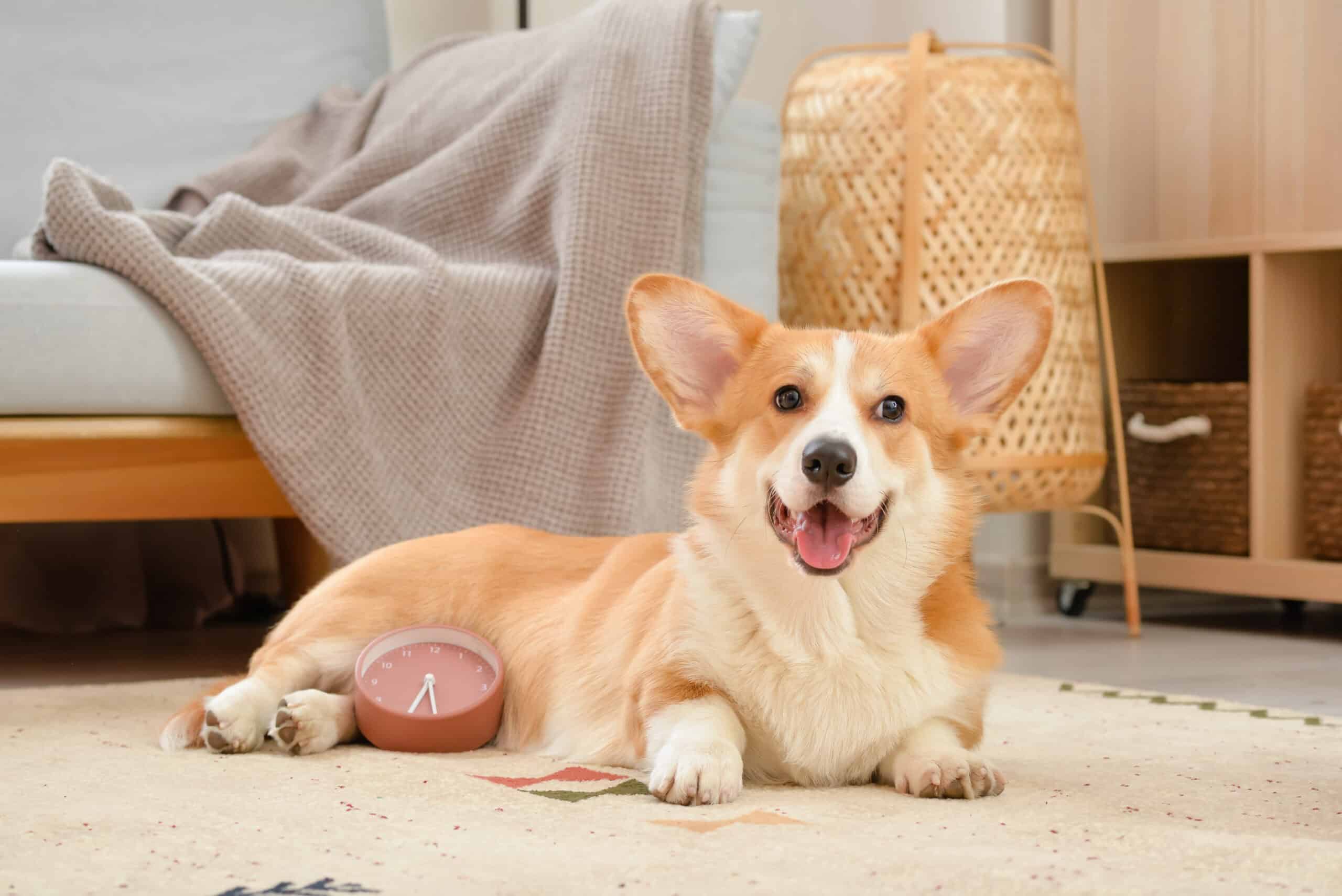Owning a pet dog brings many responsibilities. Your dog is depending upon you for virtually every aspect of their care – from daily functions like feeding and using the bathroom, to other activities that aid their development, such as physical exercise and enrichment.
Of course, while your dog is totally reliant on you to invest your time and effort towards these endeavors, it’s unlikely that your own life is entirely devoted to them. You may have other responsibilities – family, work, household chores, and social engagements to name a few. How do you balance up making sure your dog receives the care and attention they require, while maintaining balance in your own life?
The best route to success – as is often the case with many things in life – lies with proper planning. Building a routine for your dog ensures that their needs are being met, while providing you with the room to mentally prepare and fit time around your other obligations. While every dog is an individual and every routine may be slightly different, there are core principles you should consider to increase the likelihood of an efficient and successful routine. We’ll review some of these ideas in this article.
Why a routine matters for your dog
If you’re an inexperienced dog owner, you may be wondering if implementing a routine for your pup is truly necessary. Will your dog truly know the difference between eating at 8am or 11:30am, for example?
Predictability has numerous benefits for our dogs. It helps to regulate key functions like metabolism, and promotes healthy digestion. Aside from the physical benefits, it also reduces the potential for behavioral issues – if your dog knows they’ll be getting a late afternoon walk, they’re less likely to stress if you have to run out of the house during your lunch break if you’re working from home.
The routine also helps to make sure that your dog’s key needs are being met. In this instance, key needs aren’t just the basics of food, water and bathroom breaks. Your dog needs physical exercise. Your dog needs mental stimulation. Your dog needs to feel a strong bond with you and other members of your household. While these needs may not appear immediate, they are crucial to building a well-rounded, emotionally stable pet. Laying each of these out in your dog’s routine means that nothing slips through the net and gets missed.
Factors to consider when building your dog’s routine
When considering the routine for your dog, there are numerous points it is worth considering, as the requirements will differ from one dog to another. Key factors include:
- Your dog’s age – Due to developmental stages, puppies will almost certainly require greater attention than an adult dog who has had a stable routine for many years. Puppies will also need more frequent bathroom outings, as may senior dogs.
- Breed characteristics – A breed akin to a King Charles Cavalier Spaniel may have no trouble spending most of their days laying on your lap, but trying the same thing with a high-drive Belgian Malinois would not be advisable. Try to assess the needs of your dog to tailor the routine accordingly (understanding breed characteristics is something you should do before bringing a new dog into your home).
- Exercise requirements – Larger dogs – particularly those who were bred to be physically active, such as working dogs – will naturally need more vigorous exercise than smaller, docile breeds.
- Training goals – If you have training goals with your dog, you may need to allocate time for working towards completing these. For obedience, you could build in a series of smaller sessions throughout the day. For dogs competing in sports (such as agility or scent work), your routine should reflect the investment of time required for your dog to make progress.
- Food intake frequency – Some dogs may only eat once or twice per day, while others may have their food spread across multiple feedings throughout the day. Food consumption should be linked to your dog’s exercise requirements – leave at least one hour between meals and strenuous exercise to reduce the probability of bloat.
- Health circumstances – If your dog has underlying health issues, this may necessitate a change to their routine to accommodate medication, gentle exercise, or food. Additionally, if your dog is recovering after surgery or sustaining an injury, you may need to adjust their routine accordingly.
- Your own lifestyle and schedule – If you are out of the home for prolonged periods of the day, this will naturally reduce the time you can dedicate to working with your dog. Consider including the rest of your family in the schedule, or find a reliable dog walker or pet sitter to help take care of your dog’s needs when you are unavailable.
Routine troubleshooting tips
If you’ve ever struggled to maintain a routine for your own life, maintaining one for your dog may seem daunting. If the idea of a routine for your dog seems overwhelming, or you’ve started and are struggling to maintain it, check out these tips below.
- Write down your routine. Committing your routine to paper makes it real – you’ll actually have to take the time to write it down. An additional benefit is that the routine can be stuck on the refrigerator as a constant reminder for the rest of your family.
- Be realistic. If you’re drained after a long eight hours of work, will you really be able to commit to a 90 minute run with your dog afterwards? Keep the schedule realistic to keep your motivation up and reduce your own risk of burnout.
- Make time for bonding activities. Building a strong relationship with your dog requires you to spend time together. Whether you are taking your dog on a walk, teaching them new tricks, or providing them with enrichment opportunities, these activities offer valuable time together that will improve your relationship.
- Don’t overlook sleep and naps. Dogs need to rest and recuperate, particularly after vigorous physical activity. A regular bedtime at night helps your dog to wind down for the evening and sets the expectation that it is time to relax. It is necessary to make time in your routine for your dog to sleep.
- Be flexible. Plans change! From short-term surprises like an unexpected visitor, all the way to big life changes like a new job or a new baby – life happens. Your routine should not be so rigid that you’ll become stressed if your dog doesn’t stick to it – as these changes occur, simply adapt to them. Constantly review your routine to make sure it suits the needs of you and your dog.
In conclusion
At Greenside Canine, we’re here to help you live a harmonious life alongside your dog. While we primarily help our clients through our dog training services, our guidance also extends to everyday aspects of dog ownership, such as building a routine for your dog. Whether you decide to enroll your dog in Private Lessons, Puppy Training or a Board and Train program, we’re here to answer any questions you may have. Reach out to us at train@greensidecanine.com or call (317) 558-9145 to discuss your training options.

